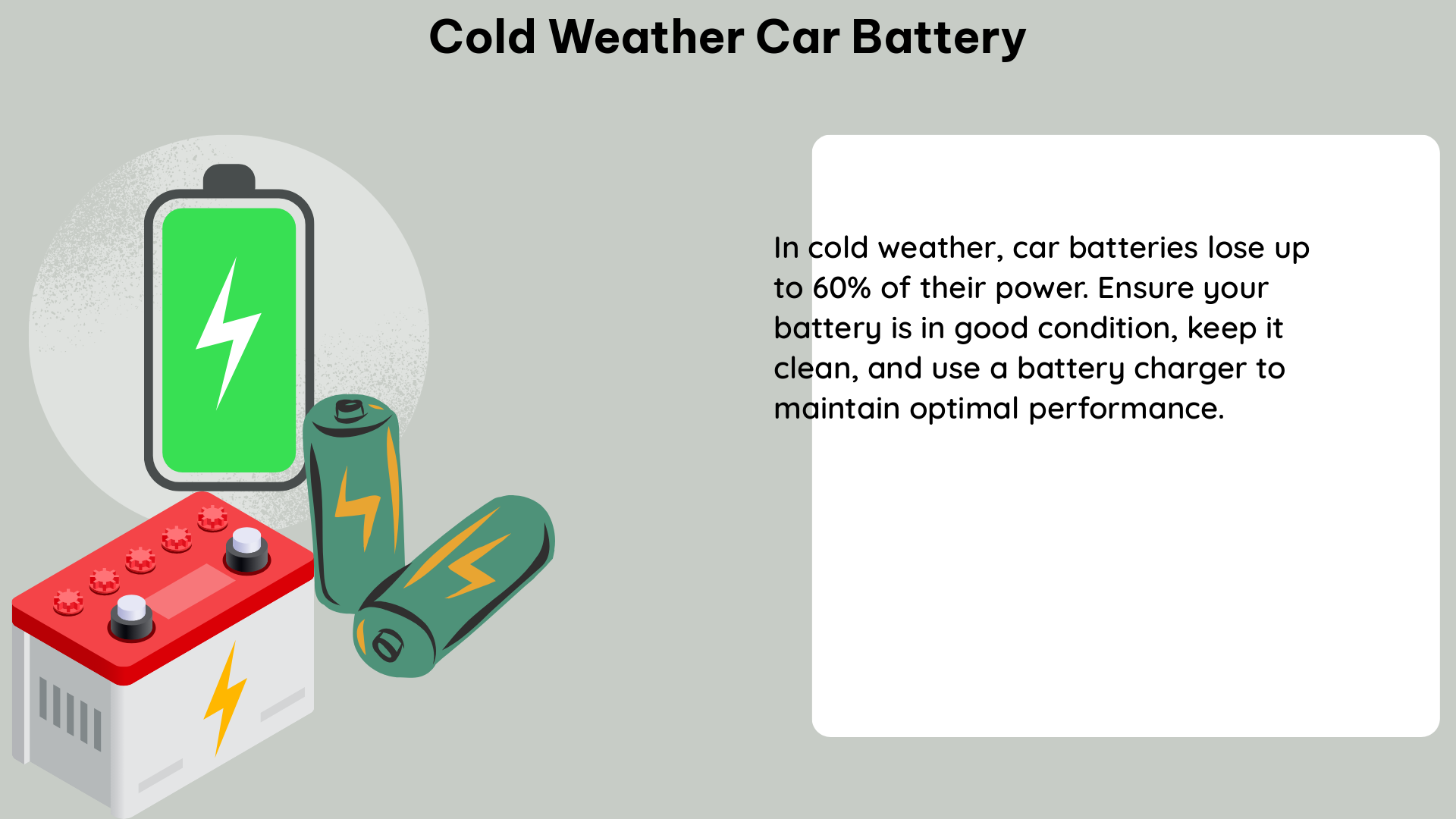When it comes to car batteries, cold weather can significantly impact their performance. Batteries struggle to operate smoothly in extremely low temperatures, primarily due to thermal management issues. Modern battery systems in electric vehicles are equipped with advanced thermal management systems that can cool the battery when it operates at high loads and heat it when it’s plugged in during cold winter nights.
Understanding the Impact of Cold Weather on Car Batteries
- Battery Capacity Reduction: In cold weather, the chemical reactions within the battery slow down, reducing its capacity. At -18°C (0°F), a lead-acid battery can lose up to 50% of its capacity compared to its performance at 27°C (80°F).
- Increased Internal Resistance: The internal resistance of a battery increases as the temperature drops, making it harder for the battery to deliver the necessary current. At -18°C (0°F), the internal resistance of a lead-acid battery can be up to 4 times higher than at 27°C (80°F).
- Electrolyte Freezing: In extreme cold, the electrolyte solution inside the battery can freeze, preventing the necessary chemical reactions and rendering the battery unusable. The freezing point of the electrolyte solution is around -40°C (-40°F) for a fully charged lead-acid battery.
- Reduced Cranking Power: The increased internal resistance and reduced capacity make it harder for the battery to provide the necessary cranking power to start the engine, especially for larger engines. At -18°C (0°F), a lead-acid battery can lose up to 60% of its cranking power compared to its performance at 27°C (80°F).
Measuring and Predicting Cold Weather Battery Performance

To predict cold weather battery performance, it is essential to measure device performance under target environmental conditions. This can be achieved by developing a low-temperature battery model using profiling software paired with an electronic load to draw current from the battery at the target temperature. The software measures the battery’s:
- Open Circuit Voltage (Voc): The voltage of the battery when it is not under load, which decreases as the temperature drops.
- Internal Resistance (Ri): The resistance within the battery, which increases as the temperature drops.
- State of Charge (SoC): The percentage of the battery’s full capacity that is currently available, which can be affected by temperature.
The software integrates the battery temperature figures into the dataset, creating a battery model incorporating temperature. This gives a reliable reference for testing device performance at cold temperatures. The profiling software interpolates Voc and Ri curves between two known data points in the model, facilitating testing at a wide variety of temperatures. Battery emulation solutions can then use these models to power your device and simulate temperature effects on the battery characteristics, instantly.
Thermal Management Strategies for Cold Weather Battery Performance
- Battery Heating Systems: Some electric vehicles are equipped with battery heating systems that use the vehicle’s electrical system to warm the battery when it’s cold, maintaining optimal operating temperatures.
- Insulation and Enclosures: Proper insulation and enclosures can help retain the battery’s heat, reducing the impact of cold weather on its performance.
- Preheating: Preheating the battery before starting the vehicle can help improve its performance in cold weather. This can be done by plugging the vehicle into a power source and activating the battery heating system.
- Battery Monitoring and Diagnostics: Advanced battery management systems can monitor the battery’s temperature, state of charge, and other parameters, and adjust the vehicle’s systems to optimize performance in cold weather.
Conclusion
In summary, cold weather can significantly impact car battery performance, primarily due to thermal management issues. Predicting cold weather battery performance requires measuring device performance under target environmental conditions, developing a low-temperature battery model, and integrating battery temperature figures into the dataset. By doing so, you can create a reliable reference for testing device performance at cold temperatures and ensure optimal battery performance in adverse weather conditions.
References:
– Hu, X., Zheng, Y., Howey, D. A., Foley, A., & Pecht, M. (2020). Battery warm-up methodologies at subzero temperatures for automotive applications: Recent advances and perspectives. Journal of Power Sources, 454, 228242.
– Why Car Batteries Perform Poorly in Cold Weather | COMSOL Blog. (2015, February 5). Retrieved from https://www.comsol.com/blogs/why-car-batteries-perform-poorly-in-cold-weather/
– How to Predict Cold Weather Battery Performance | Keysight. (n.d.). Retrieved from https://www.keysight.com/us/en/solutions/predict-cold-weather-battery-performance.html

The lambdageeks.com Core SME Team is a group of experienced subject matter experts from diverse scientific and technical fields including Physics, Chemistry, Technology,Electronics & Electrical Engineering, Automotive, Mechanical Engineering. Our team collaborates to create high-quality, well-researched articles on a wide range of science and technology topics for the lambdageeks.com website.
All Our Senior SME are having more than 7 Years of experience in the respective fields . They are either Working Industry Professionals or assocaited With different Universities. Refer Our Authors Page to get to know About our Core SMEs.